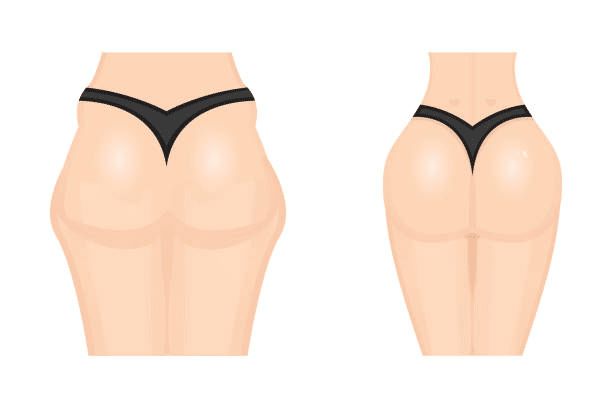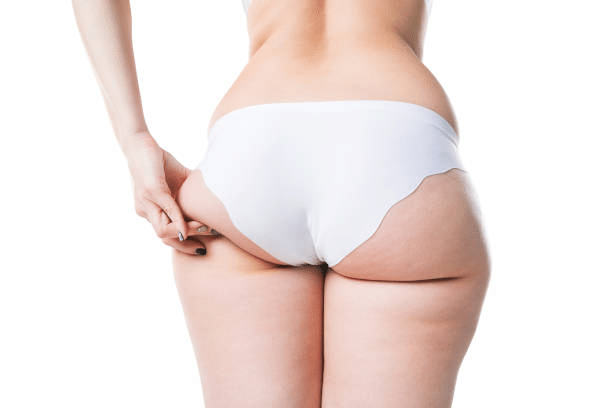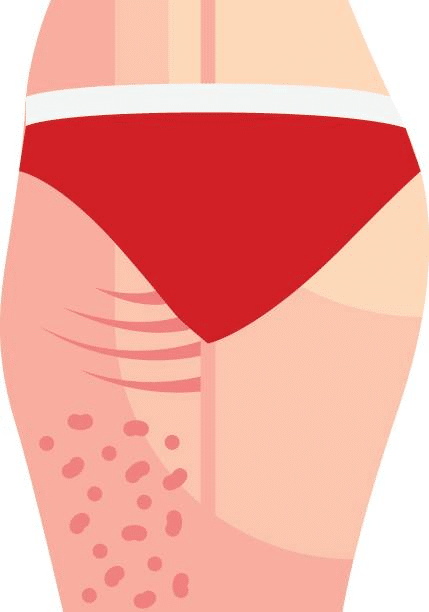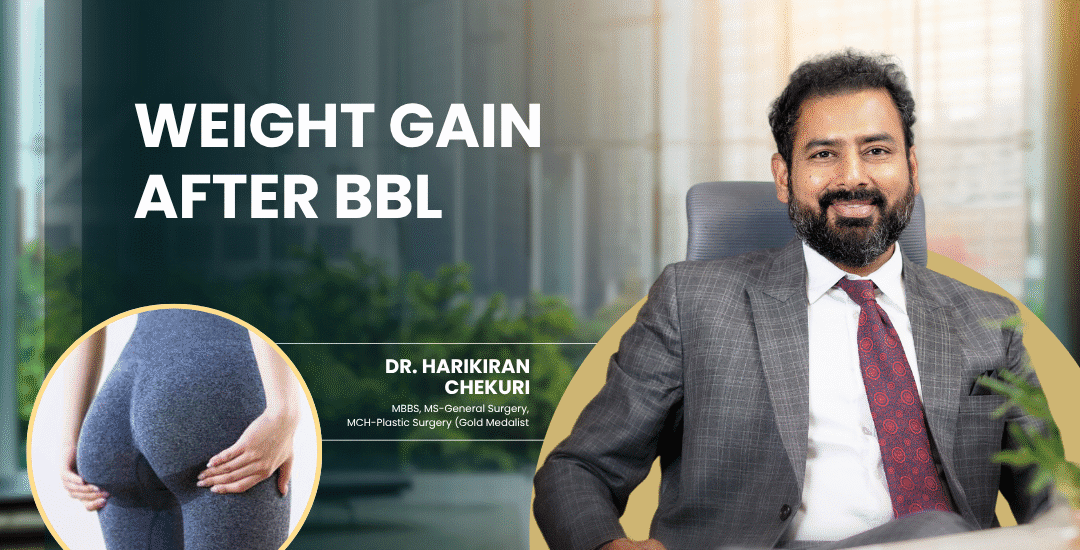Weight Gain After BBL

However, a common question arises post-surgery — what happens if you gain weight after BBL?
Understanding how your body changes after the procedure can help you maintain your results for the long term.
Dr. Harikiran Chekuri, a prominent plastic surgeon in Hyderabad, has over two decades of experience performing buttock augmentation, along with advanced procedures like body contouring, breast surgery, and hair transplant in Hyderabad. His expertise lies in achieving natural, balanced results through meticulous surgical techniques and patient-centered care.
Effect of Weight Gain on BBL Results

During a BBL, fat is removed from specific body areas such as the abdomen, thighs, or flanks using liposuction. The purified fat is then strategically injected into the buttocks to enhance shape and volume. These fat cells integrate with your body’s natural tissue, behaving like any other fat in your body.
When you experience weight gain after BBL, your body doesn’t differentiate between transferred fat and existing fat. Both areas expand — but not always uniformly. This can alter the smooth contour and proportions achieved after surgery.
For instance:
● Fat in the buttocks may enlarge, creating a bulkier appearance.
● Donor areas like the abdomen may accumulate more fat, reducing the defined waistline.
● The overall balance between your upper and lower body may shift.
Even a modest weight gain of 5–10 kilograms can make a noticeable difference in your BBL outcome. Maintaining a stable weight is, therefore, essential to keeping your results harmonious.
Can a few extra kilos make a difference? Let’s find out
What Are the Risks of Weight Gain After BBL?

Beyond cosmetic changes, significant weight gain can lead to several complications that affect both your results and health.
Here are the key risks associated with weight gain after BBL:
1. Distortion of body contour
Uneven fat accumulation can cause lumps, asymmetry, or irregular buttock shape, diminishing the refined outcome of your surgery.
2. Stretch marks and skin laxity
Rapid or excessive weight gain stretches the skin, especially around the buttocks and hips, which can lead to sagging or stretch marks that alter the smooth appearance.
3. Increased pressure on fat cells
Newly transferred fat cells require time to stabilize. Excessive weight gain can enlarge these cells, compromising their blood supply and longevity.
4. Difficulty in future revisions
If weight gain causes noticeable irregularities, secondary procedures may become more complex due to stretched or uneven tissue distribution.
Simply put, while your BBL results are long-lasting, they aren’t immune to lifestyle changes — and maintaining your target weight plays a vital role in their preservation.
It’s important to know this key difference.
Temporary vs Permanent Weight Gain After BBL
After BBL, your body undergoes recovery and metabolic adjustments. Some patients notice mild, temporary bloating or swelling, which is not actual fat gain. This typically subsides within a few weeks as the body heals.
However, permanent weight gain occurs when there’s an actual increase in fat tissue due to higher calorie intake and reduced activity levels. Unlike swelling, this type of weight gain directly affects fat cells in both the buttocks and other areas of the body.
Here’s how it breaks down:
● Temporary weight gain:
Caused by fluid retention or inflammation; resolves naturally.
● Permanent weight gain:
Results from fat cell enlargement or creation of new fat cells; alters body shape and BBL results.
The difference lies in lifestyle choices. A balanced diet and regular exercise routine are key to ensuring any post-operative swelling doesn’t turn into long-term fat accumulation.
Here’s the secret to keeping your BBL results long-term.
Why Is Weight Stability Crucial After BBL?

Stable weight allows the newly grafted fat cells to thrive without disruption. Large fluctuations, whether gain or loss, can compromise the delicate balance of transferred fat, leading to uneven contours or reduced projection.
Here’s why maintaining weight stability matters so much:
● Ensures long-term results:
Fat cells that adapt well in the first few months become part of your natural anatomy. Stable weight supports their survival.
● Prevents shape distortion:
Fluctuations can cause expansion or shrinkage of fat cells, altering the aesthetic proportions.
● Supports skin elasticity:
Maintaining a consistent body mass reduces skin stress and sagging over time.
● Encourages healthy healing:
Proper diet and steady weight promote circulation and minimize swelling during recovery.
A well-maintained weight doesn’t mean extreme restriction — it’s about consistency. Healthy eating, hydration, and moderate physical activity are your best allies for long-term BBL satisfaction.
When to Consult a Surgeon
If you notice changes in your buttock shape, uneven fat distribution, or discomfort following weight fluctuations, it’s best to consult a board-certified plastic surgeon.
A follow-up consultation helps assess the extent of changes and determine if minor corrections or lifestyle adjustments can restore balance.
Dr. Harikiran Chekuri emphasizes that timely evaluation prevents potential complications and supports optimal results. Even years after your initial BBL, staying in touch with your surgeon for routine check-ins is a proactive step toward maintaining your aesthetic goals.
Conclusion
A BBL can deliver stunning, long-lasting results — but those results depend on how well you manage your body after surgery. Weight gain after BBL can lead to asymmetry, altered proportions, and stretch marks that affect your desired contour.
With guidance from an experienced plastic surgeon like Dr. Harikiran Chekuri, you can achieve and maintain beautifully sculpted results.
Consistency in weight management, a nutritious lifestyle, and regular follow-ups are the secrets to keeping your BBL outcome smooth and natural-looking.
Frequently Asked Questions
1. Does weight gain after BBL make my butt bigger?
2. How much weight gain affects BBL results?
3. Is it possible to redo BBL after significant weight gain?
Yes. A revision BBL can refine your shape, but it depends on factors like skin quality, fat availability, and your overall health. Always consult a certified surgeon before planning another procedure.
4. What if I lose weight after BBL?
Just as weight gain affects results, significant weight loss can also reduce buttock volume and projection. Aim for stable, moderate weight maintenance.
5. How long should I maintain a stable weight after surgery?
At least 6–12 months post-BBL is critical for fat stabilization. Beyond that, long-term consistency ensures your results remain balanced and natural.



